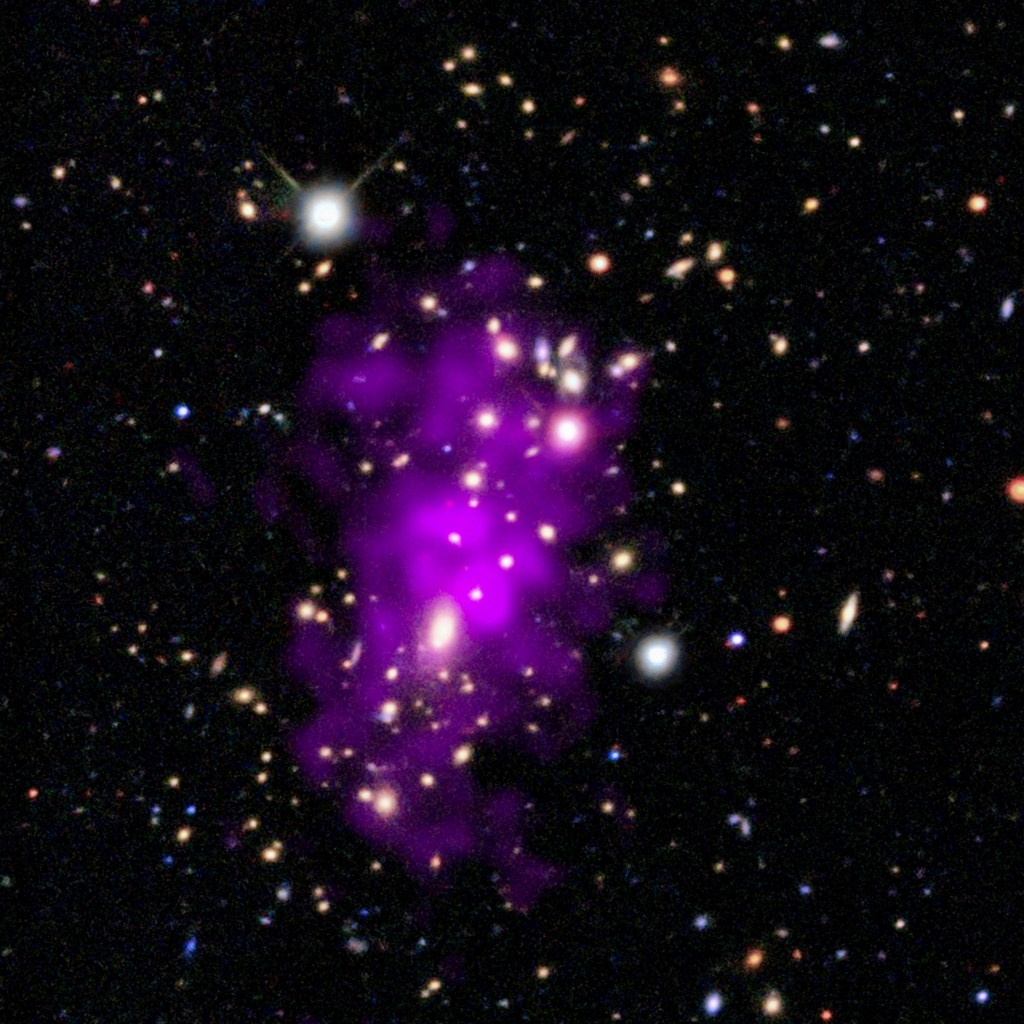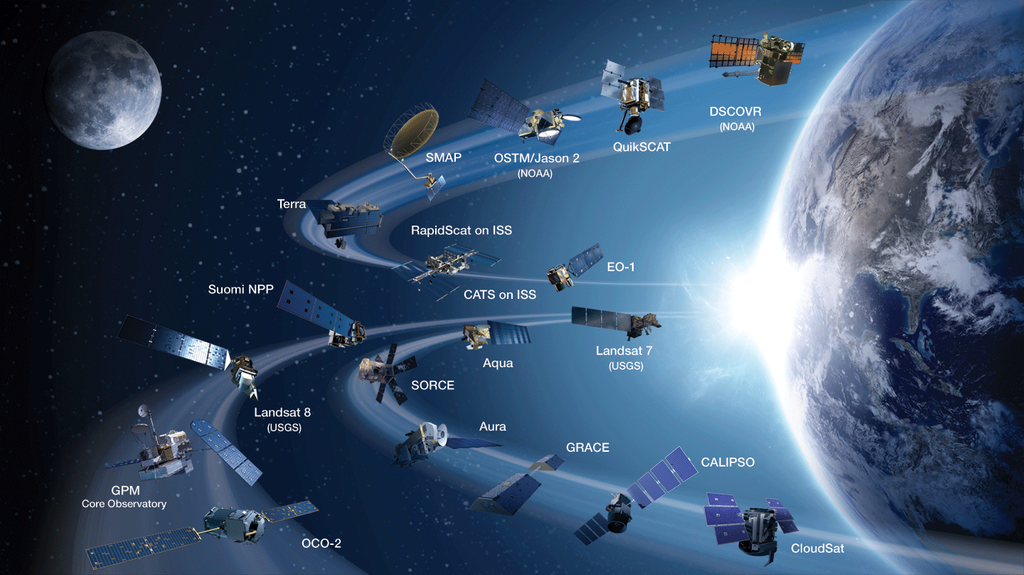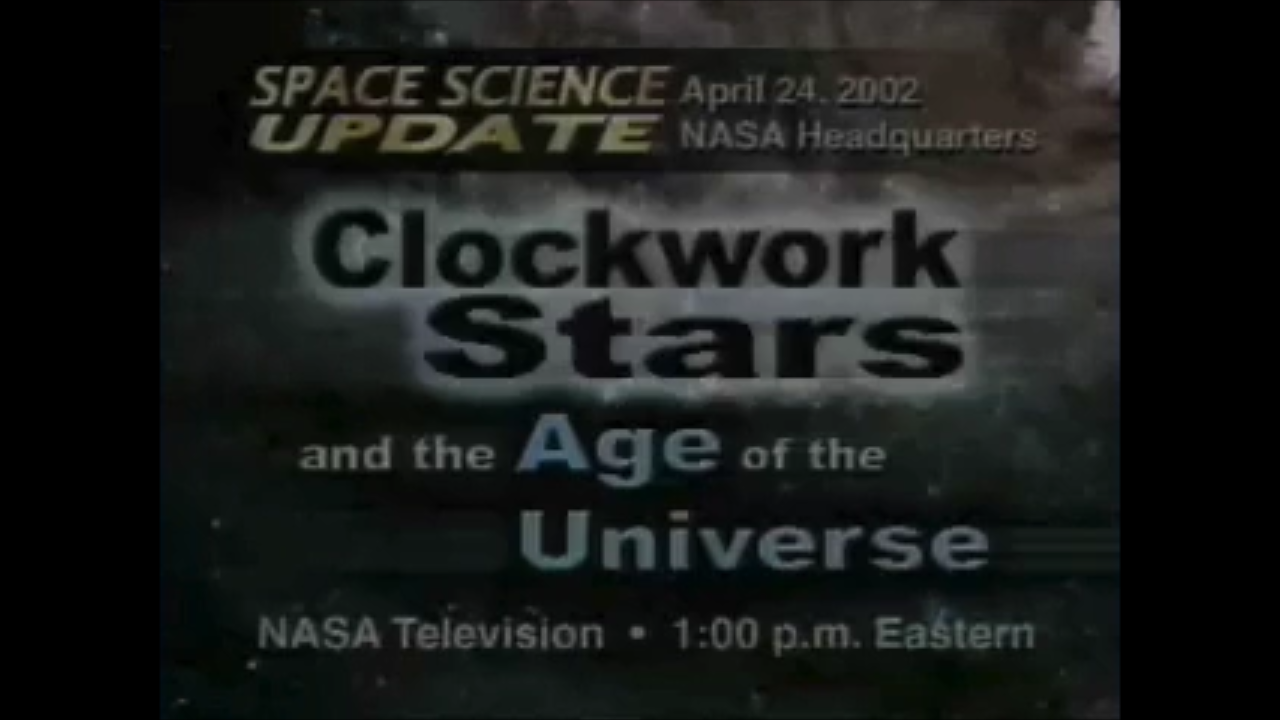1 min read
M4 Ground-Based (NOAO) Image

About the Object
- R.A. PositionR.A. PositionRight ascension – analogous to longitude – is one component of an object's position.16h 23m 35.4s
- Dec. PositionDec. PositionDeclination – analogous to latitude – is one component of an object's position.-26° 31' 31.9"
- ConstellationConstellationOne of 88 recognized regions of the celestial sphere in which the object appears.Scorpius
- DistanceDistanceThe physical distance from Earth to the astronomical object. Distances within our solar system are usually measured in Astronomical Units (AU). Distances between stars are usually measured in light-years. Interstellar distances can also be measured in parsecs.M4 is roughly 5,600 light-years from the Earth.
- DimensionsDimensionsThe physical size of the object or the apparent angle it subtends on the sky.10 to 30 light-years across
About the Data
- InstrumentInstrumentThe science instrument used to produce the data.WIYN/KPNO>0.9m
- Exposure DatesExposure DatesThe date(s) that the telescope made its observations and the total exposure time.March 1995
- Object NameObject NameA name or catalog number that astronomers use to identify an astronomical object.M4, NGC 6121
- Object DescriptionObject DescriptionThe type of astronomical object.Globular Cluster
- Release DateApril 24, 2002
- Science ReleaseHubble Uncovers Oldest “Clocks” in Space to Read Age of Universe
- CreditNOAO/AURA/NSF
Related Images & Videos
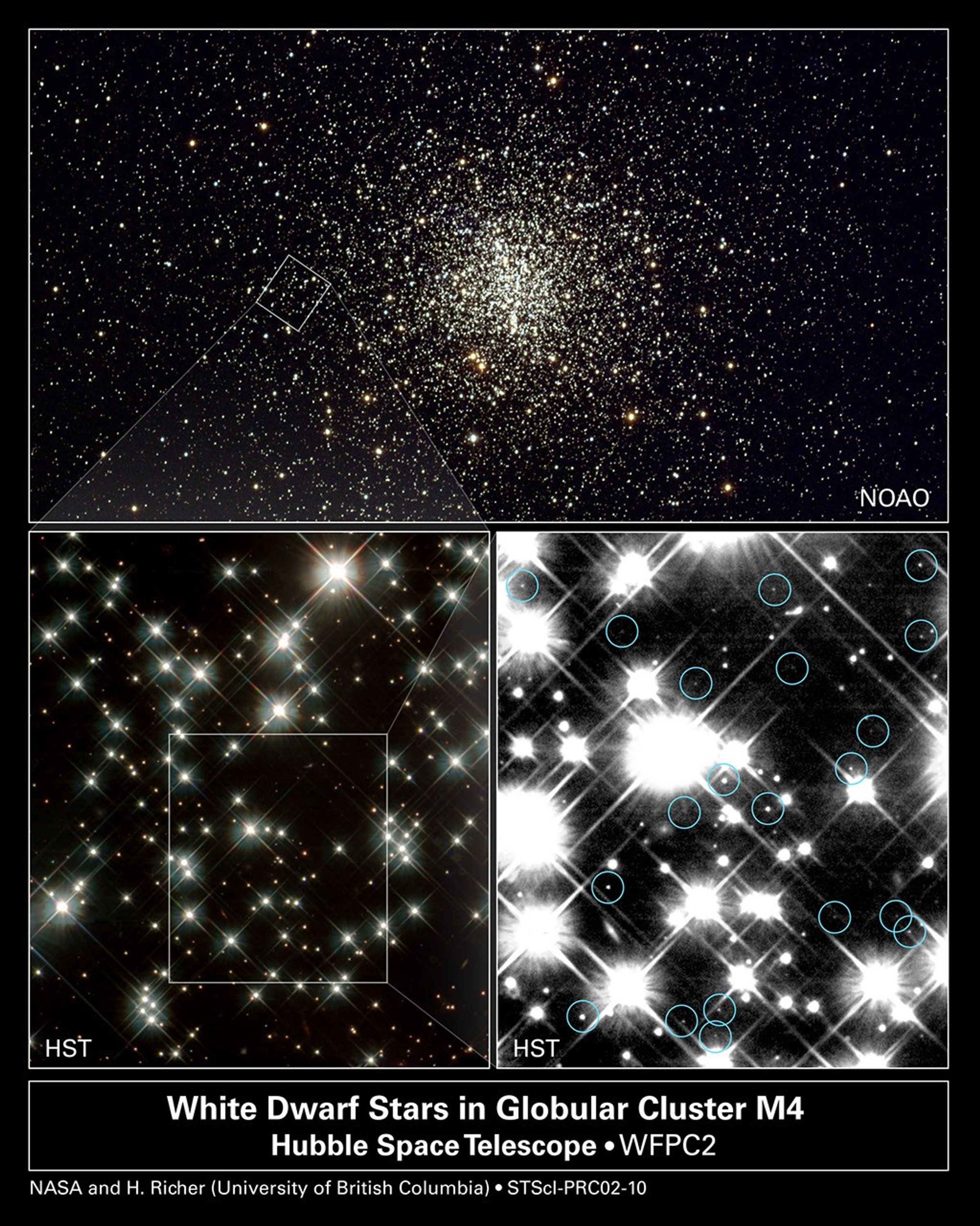
Hubble Pinpoints White Dwarfs in Globular Cluster
Peering deep inside a cluster of several hundred thousand stars, NASA's Hubble Space Telescope uncovered the oldest burned-out stars in our Milky Way Galaxy. Located in the globular cluster M4, these small, dying stars - called white dwarfs - are giving astronomers a fresh...

Globular Cluster M4's Location in Milky Way
This illustration shows the location of the globular cluster M4 in our Milky Way Galaxy, which is depicted "edge-on" or from the side. Globular clusters like M4 are the first pioneer settlers of the Milky Way. Many coalesced to build the hub of our galaxy and formed billions of...
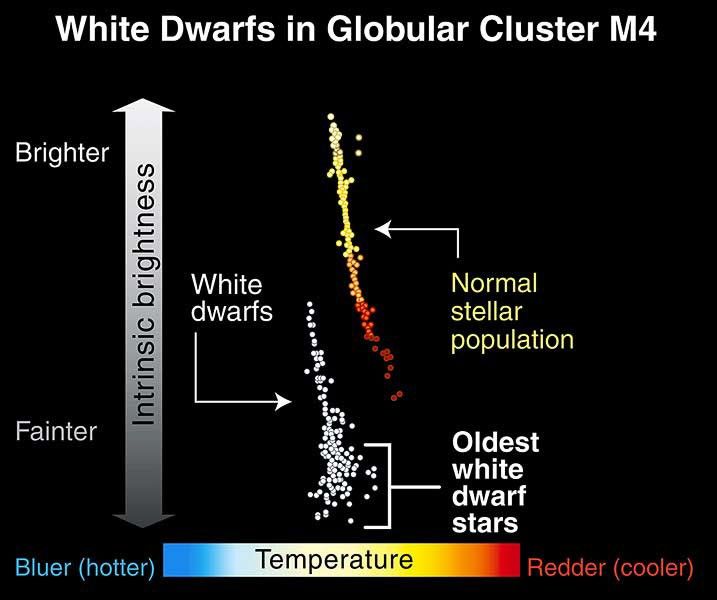
White Dwarfs in Globular Cluster M4
This graph shows the relationship between the temperature and brightness of a sampling of stars in the globular cluster M4. The line of dots at upper right represents main-sequence stars, those whose cores are fusing hydrogen. Normal stars like our Sun fall in the middle of this...
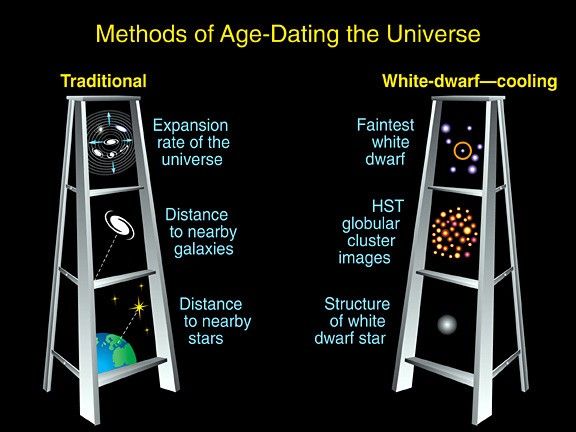
Age-Dating the Universe
This illustration outlines the two techniques astronomers have used to determine the universe's age. In the "traditional method," astronomers used measurements of the universe's expansion rate to calculate the age of the cosmos. They determined the expansion rate by measuring...

Birth of Our Galaxy
This is an artist's concept of the early formative years of our Milky Way galaxy, circa 12.7 billion years ago. That long ago, the majestic spiral arms of our galaxy had not yet formed; the sky was a sea of globular star clusters. The bright blue star cluster at center left is...
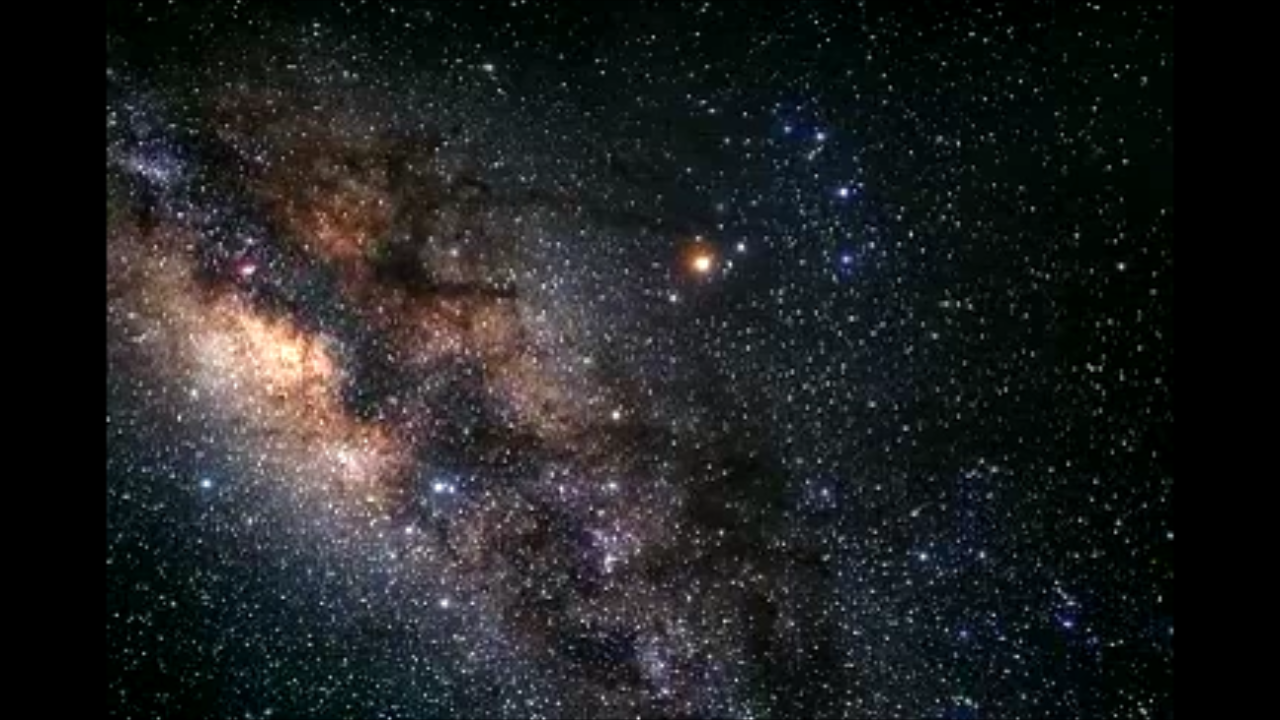
Animation Zoom into M4 Globular Cluster
Sequence begins with a backyard view of the Scorpius region, then zooms to the Hubble Space Telescope's Wide Field Planetary Camera view of the M4 globular star cluster, located in the Milky Way Galaxy's stellar halo. Circles fade in, indicating the location of the cooling white...
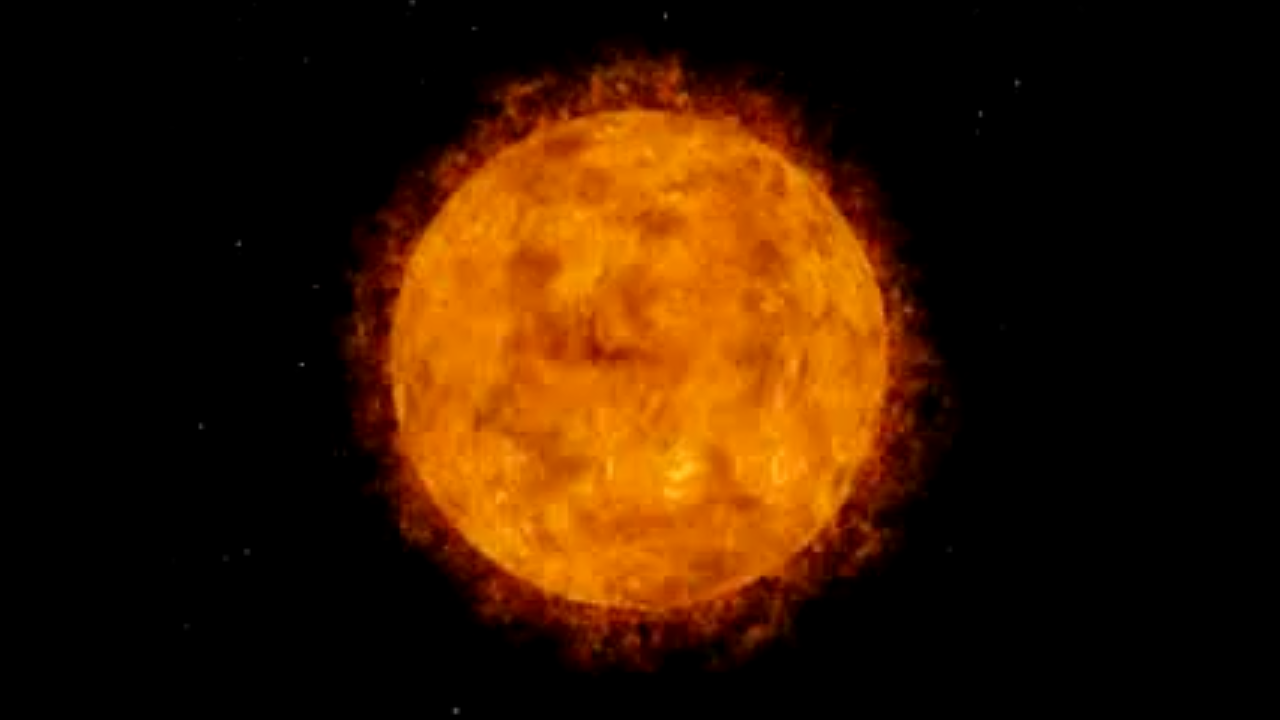
Globular Cluster Age: White Dwarf Ages in M4
NASA's Hubble Space Telescope has found the oldest burned-out stars in our Milky Way Galaxy. These extremely dim and old "clockwork stars" provide a completely independent reading of the age of the universe. By measuring the temperature of white dwarf stars in a globular star...
Share
Details
Claire Andreoli
NASA’s Goddard Space Flight Center
Greenbelt, Maryland
claire.andreoli@nasa.gov




